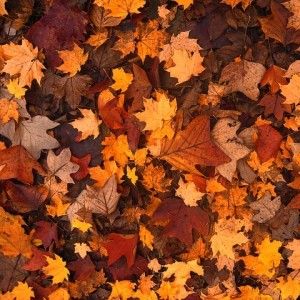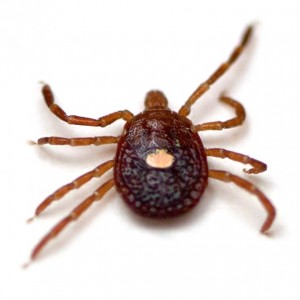Areas that are a transition between the clean and manicured, and the rough and naturalized are hot spots. People and animals will often pass through these areas and ticks will be waiting to attach to them. Areas with tall grasses and shrubs on these edges will have higher populations. This is where they wait for their next host to feed on. Ticks will “quest”, which means they will position themselves the height of their hosts. This allows them to grab their host with one or more legs, and still keep a grasp on the vegetation.
Wooded Areas
In the woods, ticks won’t be dropping from the sky, but will again be strategic in climbing up vegetation where they can find a deer, rodents, or people walking by. If it’s as tall as you or lower, watch out for ticks in those areas because that’s where most wildlife will be found. Many young ticks will feed on smaller rodents before they mature and move onto larger hosts later in life.
Under Leaves
There are many rodents such as voles and mice that will use the cover of fallen leaves to wander about on the forest floor as well as areas where they blow and collect in home and commercial landscaping. These areas can often contain ticks that are trying to find their next rodent to feed on.
In Groundcover
Plantings with Pachysandra, Ivy, Myrtle, and other groundcover plants will often be a favorite safe haven for voles and mice. These areas will also be hot spots for ticks that are looking to feed on smaller hosts. When working in these areas, where protective clothing and gloves and check yourself regularly. Because these areas are often moist, ticks will also seek them out to avoid dehydration.


Stone Walls & Woodpiles
Another area where mice can be commonly found is in voids of woodpiles and stone walls. Ticks love these areas because they often contain moisture they need to survive as well as hosts such as mice. Be sure to where protective clothing and gloves and check yourself for hitchhikers whenever near these areas or handling firewood.
There is only so much you can do to eliminate these habitats as many of them could not even be located on your property. Even if they are located on your property, you may not wish to remove all of your plants, remove all your groundcover, or remove your stone walls and woodpiles. If you have areas where ticks may be found on your property, there is hope. Having a
pest control company (or exterminators in old terminology) spray tick control materials in these areas can go a long way to reduce tick populations. Our company has a
Tick & Mosquito Control program that can reduce pest populations by applying materials to these areas approximately 4 times from spring through fall when ticks are very active. If you would like to learn more, please don’t hesitate to contact us.




